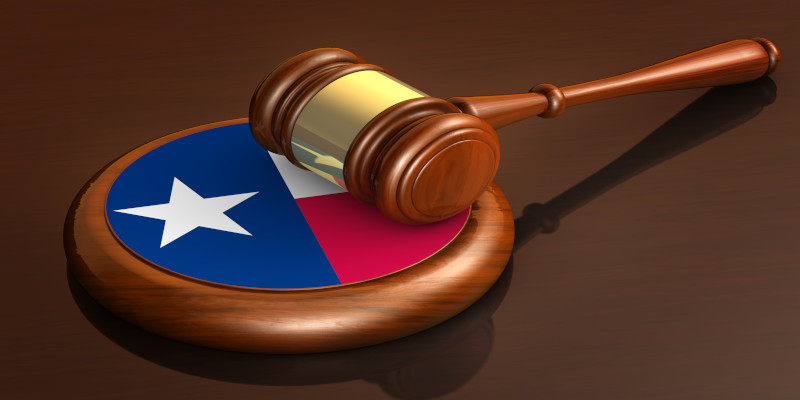
When a business or other relationship sours, conflict often escalates, sometimes to the point of legal action. Before taking such drastic and costly action, it is wise to determine what exactly a lawsuit in Texas involves and to carefully consider whether the potential advantages of a lawsuit outweigh the costs. Even if a client and attorney decide to move forward on a case, it is important to understand many of the steps and requirements involved in litigation.
The Initial Consult with Your Attorney
A party in a lawsuit might be 100% certain that he or she has been wronged, and that may be true. However, the fact finder will look at the facts of the case, irrespective of the strong emotions either party may feel. An attorney objectively evaluates whether or not a lawsuit is viable. The best results come from complete honesty, especially when sharing information with an attorney. Sometimes because people are too angry to see the big picture and sometimes from concern that an attorney may not represent them, clients are inclined to omit or sugarcoat information. Experienced attorneys are not easily shocked by unflattering information and details. In fact, knowing the complete details of the situation, positive and negative, is essential for the attorney to fully prepare for the case.
Witnesses
Based on this full disclosure of information, an attorney also accurately gauges the need for fact and/or expert witnesses. Fact witnesses are those who have firsthand knowledge of the situation and are able to share those facts. Expert witnesses have specialized training, knowledge, and/or experience that makes their opinion about a situation helpful. Their ability to clarify relevant information often helps a jury to understand complex, technical topics, and that understanding may guide the jury to support one verdict over the other. Since witnesses are disclosed under Rule 194, the earlier the attorney is able to identify the need for witnesses, the better.
Causes of Action
To move forward, facts must fit within valid legal theories, also known as causes of action. No matter how angry or aggrieved a person may be, if the complaint does not align with a cause of action, it will be dismissed. The attorney must therefore discern which cause of action to plead by researching previous court cases that have similar facts. If there is no cause of action, there is no viable legal theory to support a complaint.
Filing and Serving a Petition
Once the causes of action are clear, an attorney must draft and file a petition. This legal document outlines how the plaintiff has been harmed by the defendant and the plaintiff’s claim for relief. The petition states the plaintiff’s allegations but does not need to include complete evidence to support those allegations. Once the petition is filed, it must be served on the defendant. Texas Rules of Civil Procedure outline in detail how, to whom, and when exactly a petition must be served.
Case Dismissal
Even after these initial actions, the case may still be dismissed. In an effort to deter frivolous lawsuits, if a case has “no basis in law or fact on motion” and/or has inadequate evidence, the defendant may file a motion to dismiss. Rule 91a further discourages frivolous lawsuits by awarding attorneys’ fees and costs to the successful party in the motion.
Alternatives for Dispute Resolution
Because lawsuits consume time and money, alternative options for conflict resolution are often recommended and sometimes even required. Mediators “promote reconciliation, settlement, or understanding among” the disputing parties. Tex. Civ. Prac. & Rem. Code Ann. § 154.023(a); Tex. Jur. 3d, Trial § 430. The mediation process allows an objective third party to resolve the conflict, usually more quickly and more cost-effectively than a court case.
Counterclaims and Cross-claims
Once the defendant receives the petition, he or she must answer the claim. Usually, defendants answer a claim with a general denial. However, their answer instead may include counterclaims and cross-claims for which the plaintiff and attorney must prepare. The defendant must respond within the required timeframe, usually about 20 days after being served. When a defendant fails to respond to a petition, the plaintiff may receive a default judgment. In that situation, the court generally accepts the defendant’s failure to respond as an admission of all facts within the petition, meaning that the plaintiff “wins” the case. Gardner v. U.S. Imaging, 274 S.W.3d 669, 671 (Tex. 2008).
The Discovery Process
Once the parties and their attorneys are aware of all claims, counterclaims, and cross-claims, they can begin the discovery process, an often lengthy process of gathering information to support or defend against claims in the litigation. According to Texas Rule of Civil Procedure 190, each party may request that the other
- answer written questions,
- allow examination of documents, locations, and other relevant facts controlled by the other party,
- undergo a physical and/or mental health examination, and/or
- attend a deposition, either written or oral.
Even if the information provided may hurt a party’s case, this information must be complete and timely.
Summary Judgments
If the case lacks evidence to support the alleged claims, or there is no genuine issue of material fact yet another option is for the court to grant a summary judgment. Tex.R. Civ. P. 166a. The Texas Supreme Court asserts that if reasonable people would draw the same conclusion based on the evidence of the case, a summary judgment may be appropriate.
Trial and Verdict
If the case finally does go to court, the parties present their evidence, and a judge or jury reaches a verdict based on that presentation. On average civil trials last 1-5 business days. However, depending on the complexity of the case, a civil trial may last as little as a couple of hours or as long as 2-3 weeks. Once the verdict is reached, a judge announces it, at which point it immediately goes into effect. Next, the judge writes and signs the order. As soon as it is written and signed, a party may appeal the decision, explaining and presenting evidence as to why the lower court’s decision is incorrect and why it should be reversed.
A verdict often includes some type of financial reward. Many options exist for collecting on a judgment, but writs of execution and writs of garnishment are most popular. If the defendant does not have the ability to pay, then the court process will have been for naught, a good reason to fully assess the defendant’s credibility before actually filing a petition.
The litigation process is usually long and difficult. Seeking the advice of an experienced attorney is an important first step in assessing the strengths and weaknesses of the case which will eventually lead to the outcome that is best for a client.
All information provided on Silblawfirm.com (hereinafter "website") is provided for informational purposes only and is not intended to be used for legal advice. Users of this website should not take any actions or refrain from taking any actions based upon content or information on this website. Users of this site should contact a licensed Texas attorney for a full and complete review of their legal issues.
